Crypto Academy Season 3 | Intermediate Course: Market Psychology & Trading Psychology
A trader places a buy order at $15. Let's call her Jane. The crypto asset she intends to buy was recommended by a crypto group on Telegram. Jane relies solely on the updates (often called signals) posted on this group.
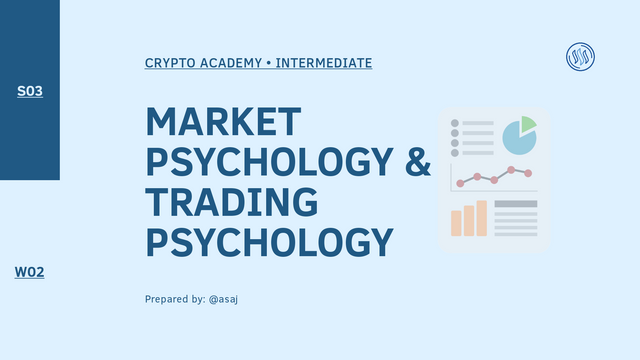
Case Study
Tada! The buy order is successful. Although the value of Jane's crypto asset has risen to $20 after a few days, she doesn't seem pleased with her trade because she feels she could have made more money if she had bought the coin last month when it was first posted on the group. It was trading at $9 back then.
So Jane decides to hold on to her coin and wait for its price to go up even higher. After a while, the market reverses and the price starts sinking in a gradual fashion. Jane seems happy with what is going on. She says to herself; "Now, I have a chance to get this coin at a price cheaper than what was initially posted on the group."
As the price continues to go down, she buys more coins. Jane does what is called 'averaging down a position.' It is a very dangerous game that involves buying more of a crypto asset as price falls. In anticipation of an increase in price, many traders average down a position with the aim of increasing their profit.
Well, things starts to get a bit uncomfortable for Jane as the crypto price refuses to recover. It gets to the point where Jane barely gets enough sleep. Her quality of life goes downhill as the asset's price continues the downtrend. It affects her mood and she looks so worried. Jane develops a habit of checking her wallet at every bit of chance she gets. She has invested not only her finance but her emotions as well.
Upon waking up one morning, Jane decides to check her holdings as she normally does. Only this time she is met with a heartbreaking outcome: The price of the coin crashed last night and her stop loss of $5 was triggered. Why did the price crash? What happened last night? All she now have is a huge hole in her wallet and lots of questions on her mind.
After spending the next couple of days feeling like a loser, Jane promises herself not to get involved with crypto anymore. She hasn't checked crypto prices in weeks, and the abstinence has done her health loads of good. Despite losing a huge amount of her investment, Jane smiles as she scrolls through the messages on the crypto group stating that the price of the crypto she sold has gone down even further. She's happy she no longer have to worry about losing more money.
Interestingly, the market starts experiencing a correction after a long bearish trend. Jane is watching. A bearish trend is a downward movement of price. On the other hand, a market correction occurs when there is a sudden change in the movement of price which is opposite to the market trend. Each time the price swings downward, Jane sighs in relief. But her relief is shortlived because soon after the downward swing in price; a bullish trend emerges.
The crypto price breaks the resistance and exceeds the $10 mark. Now Jane can't stop thinking about something. You guessed right! She wish she had not sold her coins. She blames stop loss for it. "Who the heck created stop loss?" she yells. "It is such a dumb concept," she continues. Now she believes traders should stick to their crypto assets no matter what happens, like they are married to it. She believes good companies would always make good investments decisions that would boost the prices of their tokens.
Like Jane, we may have had (or currently have) similar feelings toward the crypto market in more ways than one. There are several 'Janes' in the crypto market and this sums up the market psychology.
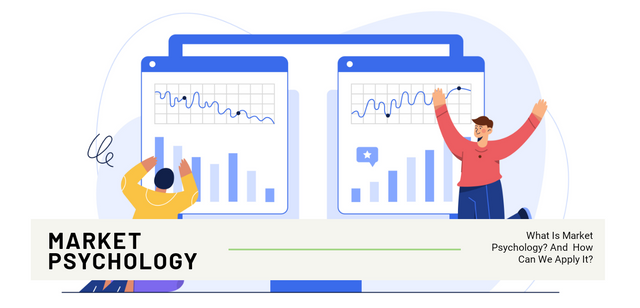
What Is Market Psychology?
Market psychology refers to the overall sentiment, behaviour, emotional state of people in the crypto market at a particular point in time. It is important to note that the aggregate behaviour of market participants does not always make sense. This is because most participants make decisions based on their feelings, which could defy all reason.
Also note that in our definition we included a certain time frame. This is due to the fact that the mindsets of market participants is always changing. There are too many factors that influence the state of the human mind. This makes it difficult to predict future outcomes.
Application of Market Psychology
The price of a crypto asset gives us an idea of how people in the market feel about that particular asset. Market psychology sums up the overall feeling of people in the market which can make them buy or sell their positions.
With that in mind, when there is a continuous increase in the prices of assets in the crypto market, it implies that the market psychology is positive. This means that people are confident and hopeful about the crypto market. They express this positive emotions by acquiring more positions, which in turn drives the prices of crypto assets upward, and could cause an asset to be overbought.
On the contrary, when the prices of cryptocurrencies continue to fall, it tells us that the market psychology is negative. This means that people are scared and anxious about the crypto market. These negative emotions is reflected in the prices of cryptos as they fall because everyone is in a rush to sell off their crypto assets due to fear, leading to an asset being oversold. A market correction often occurs once the fear have subsided.
The periodic change in the mindsets of market participants create the instability in the crypto market. Any technical indicator that reflects oversold and overbought margins can be use to measure market psychology. This can also help in forecasting the rise and fall in the value of crypto assets.
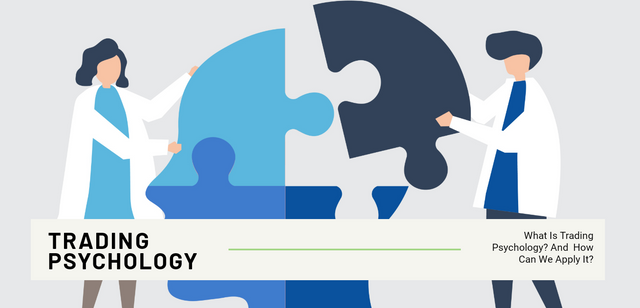
What Is Trading Psychology?
Trading psychology deals with the mindset of an individual investor when making decisions in the crypto or stock market. The word 'psychology' refers to the mental state, thinking ability and behaviour of a person. So when we say 'trading psychology' you can interpret it as 'trading behaviour.'
From the above statement, it can be deduced that trading psychology involves just one individual. Therefore, combining the trading behaviour of multiple persons bring about what we call the market psychology.
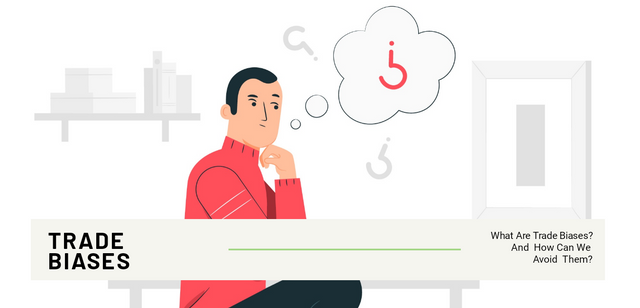
Trading Biases
There are several human error in reasoning and in processing available information that can lead to poor investment choices, known as trading biases. They are broadly categorised into the following:
- Emotional Bias
- Disposition Bias
- Mental Accounting Bias
- Confirmation Bias
- Self-Attribution Bias
- Herd Mentality Bias
- Anchoring Bias
- Trend-Chasing Bias
- Bounded Rationality Bias
- Representative Bias
Now let's examine some of these biases.
1. Emotional Bias
When a trader make investments based on his feelings it is known as an emotional bias. This is because such behaviour usually doesn't make sense and may not have any logical explanation for making trade decision. The four most prominent types of emotional bias that drive trading psychology are:
- Fear: The proverbial saying that fear kills courage and confidence is made apparent in crypto market trading. Fear is the reason why an investor may refuse to take risk. Out of concern about losing funds an investor declines potentially rewarding crypto investment. In a bear market fear leads to panic selling. On the other hand, at the beginning of a bull market an investor may be quick to sell crypto holdings due to fear of market reversals. Thus, he will make less profit as a result of the early exit from the market.
- Greed: Greed induces a behaviour that is quite the opposite of what fear causes. Greed leads to overconfidence which in turn makes an investor to take too much risk. A greedy investor would likely make trade with high risk without conducting adequate research, or buy cryptos simply because its value is increasing. Greed can also reveal itself during the end a bull run, an overconfident investor who has already made profit may decide to hold a coin in a bid to squeeze out extra profits. Also, note that it can lead one to invest in crypto based on mere assumptions.
- Hope: Of the four prominent emotions that influence trading behaviour hope appears to be the only positive emotion on the outside. However, in the crypto world, there exist a negative type of hope. Buying a coin and sticking to the trade like one is married to it isn't an optimal trading strategy. Hope is most apparent in a bear market. A trader may hold a coin against the suggestion of technical indicators in the hopes of a future rise in price.
- Regret: Although the acronym FOMO (fear of missing out) contains the word fear, it falls under the category of emotion called regret. After missing out on a good trade an investor may regret his inaction and irrationally buy the coin when it is already at an ATH (all time high), simply because he doesn't want to miss the opportunity of gains from a further rise in price. This often leads to making huge losses.
Other types of emotional biases that influence trading behaviour include; anger, anxiety, and excitement.
2. Disposition Bias
Disposition bias is also known as loss aversion bias. It occurs when a trader refuses to admit mistakes on investment and tries to justify his or her decision by holding his positions even if the asset is losing its value. He assumes that bad investment would only become a loss if he sells his position.
In some occasions, the investor may decide to buy more assets as the prices continues to drop, doing what is called averaging down a position. As a result, he may quickly sell off any other asset that gives him profit in an attempt to compensate for his current losing positions. By so doing, he places more weight (priority) on avoiding loss instead of making profit.
3. Mental Accounting Bias
Mental accounting bias occurs when an trade doesn't treat all money as the same. For example, let's say a trader who resides in a country where cryptocurrency transactions are taxable. The trader buys MANA and SWIPE. MANA enters a losing position and SWIPE starts rising in value. However, the trader is in need of cash.
Due to mental accounting bias, the trader would most likely sell his winning position in SWIPE to satisfy his need for cash. He reasons that he has free money in SWIPE because of the gains, but there is an error in his thinking because there is no such thing as free money. All money are the same so money should be treated as perfectly fungible. Besides, he will pay tax on the profit he gets from selling SWIPE, which will further reduce the supposed gain.
How to Avoid Mental Accounting Bias
In this situation, the best decision is to conduct a technical analysis. For instance, if the technical analysis suggest that the loss on MANA as well as the profit on SWIPE will increase, it is best to sell the losing position in MANA because he won't pay tax on it and the risk of further loss that can occur from holding the MANA will be eliminated.
Other biases for further reading are:
- Confirmation Bias
- Self-Attribution Bias
- Herd Mentality Bias
- Anchoring Bias
- Trend-Chasing Bias
- Bounded Rationality Bias
- Representative Bias
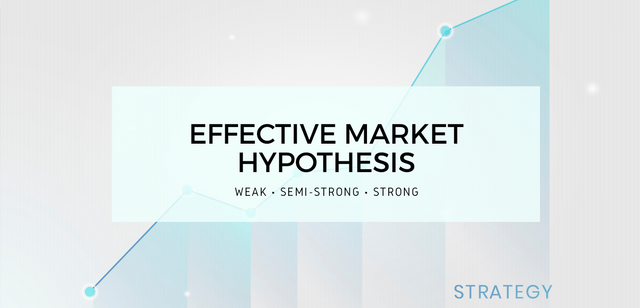
Efficient Market Hypothesis (EMH)
According to the efficient market hypothesis, often called the efficient market theory, the price of cryptocurrencies immediately indicates any new information that enters the market.
This theory implies that using fundamental analysis (detailed examination of the financial information) and technical analysis (study of price patterns) to select cryptos in a portfolio will not generate more profits than the gains of a portfolio of cryptos that was chosen by random selection.
Therefore, efficient market hypothesis says that traders can only get greater returns if they put funds in speculative investments. However, the risk level of such investments are usually very high. The theory favours high-risk investments because it is based on risk adjustments.
Forms of Efficient Market Hypotheses (EMH)
The level of application of the efficient market theory varies across the different forms of EMH. There are three forms of EMH, they are;
- Weak EMH
- Semi-strong EMH
- Strong EMH
I recommend that you do more research on these forms of efficient market hypothesis.
Final Words
Conclusively, we have learnt about market psychology and trading psychology. While the both forms of psychology involves state of mind of people, trading psychology focuses on specific individual, whereas market psychology reflects the aggregate behaviour of people in the crypto market.
We have also been able to identify several human errors in reasoning and in processing available information that often lead to poor judgment and irrational investment. In addition, we have summarised the assumptions of efficient market hypothesis.
Homework (S03 • W02)
Note: Please ensure to read this homework post thoroughly in order to understand the terms and answer the questions correctly. Also, do your research on the suggested topics for further reading.
Part A (Case Study)
The case study given is an example of what type of psychology? Explain the reason for your answer.
Using the case study above, list and explain at least 5 biases that influenced Jane's trading behaviour with examples of how it affected her behaviour?
List and explain how each bias you have mentioned can be avoided?
Part B (Research & Analysis)
What type of analysis can be used to monitor market psychology and trading psychology, and why? Identify the differences between trading psychology and market psychology.
How can you measure market psychology using a crypto chart? Select 5 trading biases and explain with screenshots of any cryptocurrency chart how the biases can cause a coin to be oversold and overbought. (Add watermark of your username)
- In your own words, define the term efficient market hypothesis (emh). List and explain the advantages and disadvantages of efficient market hypothesis (emh).
Guidelines
Ensure to post your work in the Steemit Crypto Academy community.
Avoid the use of fluffs, filler words, or unnecessary information. The recommended word count is 500 words or above.
Plagiarism, word spinning, and content farming are prohibited. This task requires screenshot(s) of your own experience. Use images from copyright-free sources and indicate the source, if any.
Homework task submission will start from 00:00 UTC July 5th to 23:59 UTC July 10th.
Eligible participants must have a reputation of 55 or above, and a minimum SP of 250 (excluding delegated SP). [Must not be powering down]
The first tag must be #asaj-s3week2 while the second and third tag should be #cryptoacademy and #behaviouralfinance. Feel free to use other relevant tags such as your country tag.
Homework can be written in Ukrainian (for native speakers only).
Attempt all questions to get maximum points. Note that unique prensentation of answers will earn you more points.
If you do not understand any part of the homework, please leave a comment below.
All images were created by me on Canvas
@asaj Professor I have little confusion in second last question you asked "Select 5 trading biases and explain with screenshots of any cryptocurrency chart how the biases can cause a coin to be oversold and overbought" so do we have to attached market screens shots with each of them or just discussed in one chart the overbought and oversold cycles?
Yes, you have to attach a screenshot to each bias you have written on in Question 5.
My task: https://steemit.com/hive-108451/@benie111/crypto-academy-season-3-week-2-homework-post-for-professor-asaj-market-psychology-and-trading-psychology
Very well explained thanks much
Your post is a real example of teaching.
I am equally impressed with the way you presented the questions. It is clear, without ambiguity. This is an example I hope other professors could emulate.
Keep this up!!
We appreciate your opinion and we hope to see your post soon.
We all have been Jane someday hahaha!
Yeah, we all have my friend, at one point in time.
Loved the intro as much as the class. Great way to teach sir, thank you.
Information Transformation Services is endowing the clients with a stunning and impressive visual experience crafted by 3D Modeling Services . We are completely forted to offers our customers with a range of appealing 3D designs that are carefully crafted to meet with all type of requirements.
This is My Homework Post professor.
https://steemit.com/hive-108451/@daiky69/crypto-academy-season-3-week-2-homework-post-for-asaj-or-or-market-psychology-and-trading-psychology-or-or-by-daiky69
teacher @asaj, I can do the homework in Spanish, right?
Yes, you can do the assigned task in Spanish.
hola profesor un saludo desde argentina , gracias por la clase, aqui le dejo mi tarea
https://steemit.com/hive-108451/@donjosuexd/crypto-academy-season-3-week-2-market-psychology-and-trading-psychology-homework-post-for-asaj